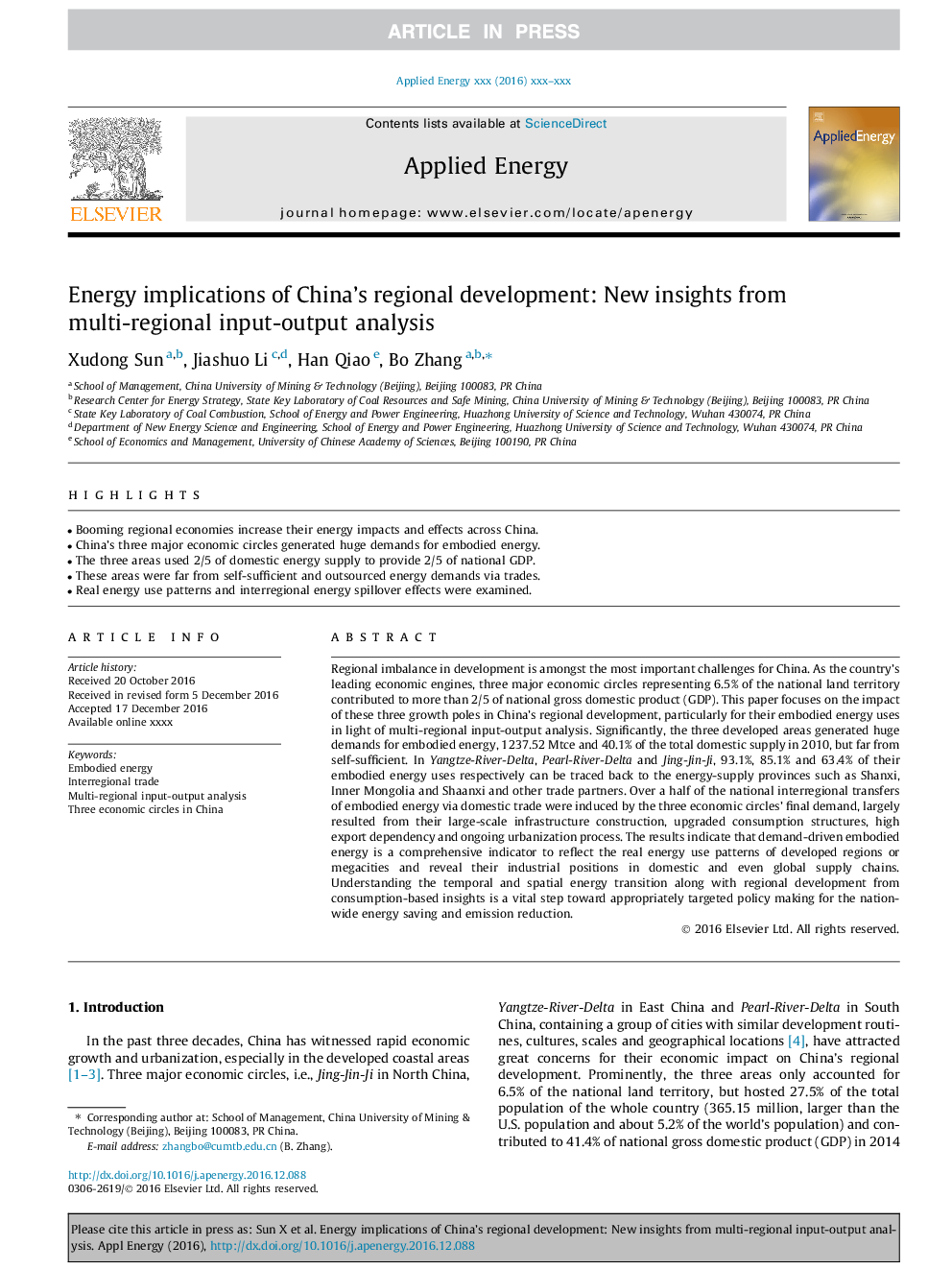| Article ID | Journal | Published Year | Pages | File Type |
|---|---|---|---|---|
| 4916220 | Applied Energy | 2017 | 14 Pages |
Abstract
Regional imbalance in development is amongst the most important challenges for China. As the country's leading economic engines, three major economic circles representing 6.5% of the national land territory contributed to more than 2/5 of national gross domestic product (GDP). This paper focuses on the impact of these three growth poles in China's regional development, particularly for their embodied energy uses in light of multi-regional input-output analysis. Significantly, the three developed areas generated huge demands for embodied energy, 1237.52Â Mtce and 40.1% of the total domestic supply in 2010, but far from self-sufficient. In Yangtze-River-Delta, Pearl-River-Delta and Jing-Jin-Ji, 93.1%, 85.1% and 63.4% of their embodied energy uses respectively can be traced back to the energy-supply provinces such as Shanxi, Inner Mongolia and Shaanxi and other trade partners. Over a half of the national interregional transfers of embodied energy via domestic trade were induced by the three economic circles' final demand, largely resulted from their large-scale infrastructure construction, upgraded consumption structures, high export dependency and ongoing urbanization process. The results indicate that demand-driven embodied energy is a comprehensive indicator to reflect the real energy use patterns of developed regions or megacities and reveal their industrial positions in domestic and even global supply chains. Understanding the temporal and spatial energy transition along with regional development from consumption-based insights is a vital step toward appropriately targeted policy making for the nationwide energy saving and emission reduction.
Related Topics
Physical Sciences and Engineering
Energy
Energy Engineering and Power Technology
Authors
Xudong Sun, Jiashuo Li, Han Qiao, Bo Zhang,
